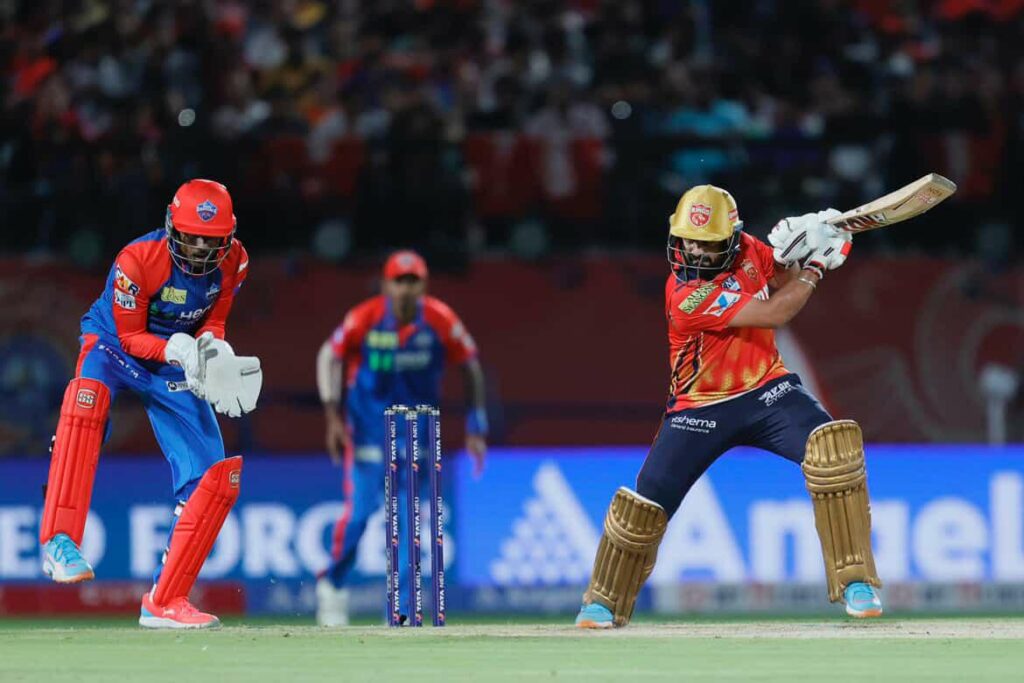
For a while, in the Punjab Kings-Delhi Capitals game played in Dharamshala, Prabhsimran Singh and Priyansh Arya seemed to be once again in a mood to power Punjab Kings to a sizeable total. By the completion of six overs, PBKS had motored along to 69 and they were 122 for the loss of one wicket at the 10-over mark. But there was something else brewing in the skies of Northern India – India-Pakistan border tensions. At 9.29 PM, the match was called off due to a power outage. The larger context being the match was abandoned as a precautionary measure.
For a while, it just made you wonder has there ever been a competitive game played during war times. If you turn the pages of history, there have been a few. On 29 July 1944, with World War II still around, Lord’s went on to host a match between the Army and the Royal Air Force. This was the time when parts of England were getting hit by V-1 flying bombs. The Lord’s stadium too was once hit by an oil bomb in 1940.
In such difficult times, the MCC with the help of Sir Pelham Warner, were able to hold a competitive game. Wally Hammond, one of the legends of cricket, had decided to partake in that match. For a period of time, the great player was away in Egypt after being named as a Squadron Leader in the RAF. Even though he wasn’t directly responsible for conflict situations. Charlie Palmer, Simpson, Bob Wyatt, Les Ames, Gubby Allen, Godfrey Evans, Maurice Leyland, Jack Robertson, and Bill Edrich were some of the other major drawcards.
At about 2 PM, the match commenced after a spell of rain. Robertson, who went on to compile over 30000 runs for Middlesex and England in first-class cricket, provided Army a fine start. All it took was around an hour for the scenario to change. A German aircraft had penetrated into British airspace and it was not far away from the Lord’s stadium.
The doodlebug (V-1 bomb) was all set to be dropped somewhere near the Lord’s stadium. At that stage, some of the players had fallen on the ground. And there was bedlam in the stands. The memories of Robertson hanging on to his bat, Edrich, Andy Wilson, Wyatt and Austin Mathews all falling flat on the ground became an everlasting image for future generations. “The players and umpires lay on the ground, and spectators were to be seen in curious postures in the pavilion and around the ground,” Warner later said in the book, Lord’s, 1787-1945.
The players and fans had a sigh of relief as the bomb was dropped 200 yards away from the ground in Albert Road. Believe-it-or-not, the players went on to resume that game. Robertson lifted the sagging spirits of the cricket cognoscenti at Lord’s by cracking a hook stroke off Wyatt, as the ball rocketed away towards the grandstand.
Eventually, Army finished up on 211 for 8 declared. David Townsend top-scored with 52. RAF then eked out a draw, ending up with 129 for 9. But the scorecard from that game became just a footnote in the years to come. The bigger picture was the near-death experience that the players and spectators had to face.
In an imaginary sense, visualise a match being played in modern times in the backdrop of a war. Even more so when you think of the fact that the match between RAF and Army resumed after a bomb landed very near to the stadium – Head-scratching and mind-numbing moment. Different times indeed.
For the Latest Sports News: Follow RevSportz



